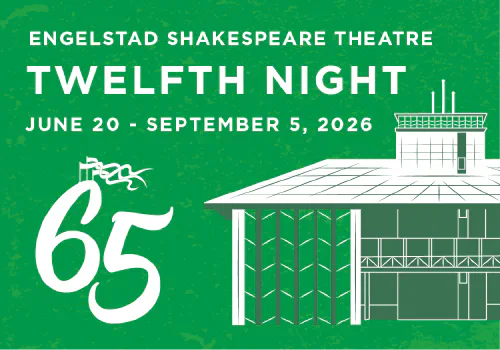By Ace G. Pilkington
Of all the monsters spawned in the depths of human nightmares or created by the ingenuity of horror writers, perhaps none has been more successful in stories, novels, films, and plays than the vampire. Indeed, the first use of a blood drinking being in a theatre came as early as 424 b.c. in Euripides’s Hecuba. The ghost of Achilles has asked that Polyxena, princess of Troy, be sacrificed to him. As Talthybius tells it, Achilles’ son holds up a “golden cup” that is “completely full.” He says to his father’s ghost, “Come here that you may drink this maiden’s pure black blood” (Diane Arnson Svarlien, transl. Andromache, Hecuba, Trojan Women [Cambridge, MA: Hackett Publishing Company, 2012], p.80, line 559, Kindle edition). Already this early, we have the vampire-like figure who is both heroic and monstrous, handsome and dead. While Greek belief in the standard vampire “the corporeal revenant who preyed upon or plagued the living—developed only after the arrival of Slavic immigrants” over a thousand years later, the legend was clearly beginning (Inanna Arthen, “‘May the Ground Not Receive Thee’ An Exploration of the Greek Vrykolakas and His Origins,” By Light Unseen, Web. 1998).
The very word “vampire” is Slavic. The Oxford English Dictionary online declares it to be “a word of Slavonic origin occurring in the same form in Russian, Polish, Czech, Serbian, and Bulgarian.” Folklore in the various Slavic languages is, if anything, overpopulated with vampires. One book on Slavic myth is actually titled Forests of the Vampire ([London: Barnes & Noble, 2003]). Russian folktales include a story about a vampire bear and another about a human vampire who drinks blood not from a “golden cup” but from “a pail” (Ace G. Pilkington and Olga A. Pilkington eds., “Buckets of Blood,” in Fairy Tales of the Russians and Other Slavs [Forest Tsar Press, 2010], 306).
According to folk belief, there were many ways to become a vampire. In the words of Paul Barber, from his book Vampires, Burial and Death: Folklore and Reality, “People who are different, unpopular, or great sinners are apt to return from the dead” ([New Haven, CT: Yale University Press, 1988], 29). The list of people who might come back as vampires is long and, as we might expect, not based on logic. It includes sorcerers, witches, alcoholics, people of another faith, highwaymen, seventh children, and so on (30). Another possibility is that “a body may become a revenant when an animal jumps over it” (33). So James Branch Cabell’s “Lovely Vampire” says in Jurgen, “As my funeral was leaving the house the cat jumped over my coffin” ([New York: Grosset & Dunlap, 1919], 268-69). “In Romania it is reported that by flying over a corpse a bat can create a vampire” (Barber 33). Of course, in folktales as in other forms of vampire fiction, the bite of a vampire works especially well.
One part of the vampire legend that has been present from the beginning and has proved highly resistant to change is the idea that the vampire is irresistible and, even when that attraction is attributed to some other (usually magical) cause, extremely handsome or beautiful. In the Russian folktale “The Vampire,” the creature is “such a fine fellow. The picture of health, regular blood and milk, and smartly and richly dressed” (Pilkington 295). In Gogol’s “Viy,” one of the world’s great horror stories, the female vampire is described as having, “Such terrible, dazzling beauty!” (Richard Pevear and Larissa Volokhonsky, transl., The Collected Tales of Nikolai Gogol [New York: Pantheon Books, 1998], 182). Since vampires are supernatural sirens who summon humans to destruction, it is only natural that they look the part.
In 1819, the dangers and discontents that a doctor found in working for a poet changed the vampire legend permanently and paved the way for Bram Stoker’s success. It was a time when folktales were being turned into literature and tales of terror were being coined into money in a host of magazines. John Polidori, Lord Byron’s former traveling companion and physician, wrote a short story called “The Vampyre.” New Monthly Magazine, which published it, claimed it was by Byron, and though the claim was not true, Byron’s reputation for literary genius and sexual scandal guaranteed a large audience and a favorable reception. David J. Skal says of Polidori, “His literary conception of the vampire still lives, rivaling (and in some ways overshadowing) the contributions of Bram Stoker” (Vampires: Encounters with the Undead [New York: Black Dog and Leventhal Publishers, 2006], 37). It was Polidori who made the vampire a Byronic hero, a charismatic, self-tormenting libertine with pale skin, dark hair, and hypnotic eyes. “Previously, vampires were the stuff of peasant culture. Now, suddenly, they could be glamorous, brooding, sexy aristocrats. Being undead would never be the same”(Skal, Vampires 44). Even more importantly, perhaps, Polidori’s story with Byron’s name attached created a vampire mania that, it would seem, is still alive or perhaps is undead and unkillable. Though Polidori did not benefit from his story’s success and committed suicide a few years later, the story was translated into multiple languages and took the stage in England and France by storm. “A contemporary critic cries: ‘There is not a theatre in Paris without its Vampire!’” (Skal, Hollywood Gothic: The Tangled Web of Dracula from Novel to Stage to Screen [New York: Faber and Faber, 2004], 16). Like Byron and so many vampires yet to come, the face of Polidori’s hero was pallid and emotionless, but “its form and outline were beautiful” (John Polidori, “The Vampyre” [London: Sherwood, Neely, and Jones, 1819], 28).
And now at last in 1897, we come to Bram Stoker’s Dracula. It was not the longest of the fictions about vampires. That dubious distinction belongs to Varney the Vampire (1847), which is longer than War and Peace and The Castle of the Carpathians (Jules Verne’s vampire novel) combined. Nor is it the best written (no one would mistake Dracula for something penned by Byron), but it reinforced or created most of the details of the vampire legend today. It is, in a sense, the default setting for what most people think they know. For example, in Sergei Lukyanenko’s Night Watch, Olga, commenting on what a terrified young boy believes, blames Bram Stoker (supposedly a vampire himself) for spreading disinformation about what is effective against the undead (Andrew Bromfield, transl., [New York: Hyperion, 2006], 81).
Stoker’s most obvious and ultimately least successful deviation from earlier versions of the legend was Dracula’s appearance. Though he is an aristocrat, the Count has none of the physical attributes of the siren or sex symbol. “Stoker broke sharply with the Byronic tradition in his delineation of Dracula as a cadaverous ancient with bad breath and hairy palms” (Skal, Hollywood Gothic 51). There has been much speculation about Stoker’s reasons for the change, including the notions that he intended Dracula to be a degenerate criminal or a representative of unrestrained animal nature. It is probably not coincidental that two fairly recent and very influential books had had characters who were not unlike Dracula in appearance, Robert Louis Stevenson’s The Strange Case of Dr. Jekyll and Mr. Hyde (1886) and George du Maurier’s Trilby (1895, book and stage play). However, Stoker’s female vampires are beautiful. One of them, Jonathan Harker tells us, “was fair, as fair can be, with great wavy masses of golden hair and eyes like pale sapphires…. All three had brilliant white teeth that shone like pearls against the ruby of their voluptuous lips” (Bram Stoker, The New Annotated Dracula [ New York: W.W. Norton & Company, 2008], 79).
Dracula, though, was not destined to be confined in a novel. Starting in 1924 in a version written by Hamilton Deane (and approved by Stoker’s widow), the Count burst forth in stage adaptations and films that would transform him and permanently fix the world’s image of creatures who live by drinking blood. This new Dracula was really the old legend returned. He was a handsome man “dressed in formal evening wear complete with an opera cloak that would further identify him with the bat” (J. Gordon Melton, The Vampire Book: The Encyclopedia of the Undead [Detroit: Visible Ink Press, 2011], 221). Or as Steven Dietz describes him in the adaptation the Festival will produce this fall, “Youthful and vibrant, sensual and charismatic. He smiles a beautiful smile” (Dracula [New York: Dramatists Play Service Inc., 1996], 26).
There is one other very important element in the legend of the vampire that has remained consistently the same—the element of horror. Again, in the words of Steven Dietz, “The question, then, is not what Dracula represents but what he is: A brilliant, seductive fanged beast waiting to suck the blood from your throat” (Dietz 85).










